Black Lightning: The Rollie Free Story
The true story behind the most famous picture in motorcycling earned top honors at this year's Motorcycle Film Festival in September capturing both 'Best of Festival' and 'Short Documentary' awards for 42-year-old LA filmmaker Zach Siglow . The documentary follows the life of Rollie Free, from his early days, through his racing years in the 1920s and '30s, owning an Indian dealership, his military service, and his post-war life. But Free is best known for setting the American motorcycle one-mile speed record in 1948, when he rode a British-made Vincent HRD Black Lightning to a speed of 150.313 mph at the Bonneville Salt Flats in Utah. To get to that speed, Free stripped down to his bathing trunks and laid flat out on the Vincent, an image which remains iconic even to this day. NYC Motorcyclist had a chance to catch up with Siglow -- who in all honesty is a close friend -- to ask him about the film short (34:51 min), its origins, influences, and plans for future distribution.
1) What first attracted you to the Rollie Free story?
The Rollie Free story is one of perseverance, guts and revenge. It is the most famous picture in motorcycling, but the story of that photograph was lost for years. For me, the best thing about old vehicles are the stories of the people that owned and used them. At our old company we had an extensive library of vehicle related books. One of them was Jerry Hatfield’s book, “Flat Out” and it chronicled Rollie’s life beautifully. It was not a largely circulated title, but an amazing story, and we thought it would make a great documentary. When the bike popped back up at Pebble Beach and then changed hands, it was an opportunity to try to make it happen.
2) Have you been to Bonneville? Have you raced, yourself?
I have been to Bonneville several times. I have never raced there as I was always filming. It is a surreal experience to be out on the salt. Beyond feeling like you are on a different planet, the history of what has happened there is just incredible. I love the spirit of Bonneville. These are people who have full commitment to their race effort but it’s mostly for bragging rights. There are no big money prizes, and sponsorships are few and far between. It’s a dirt-under-the-fingernails, box-truck, open-trailer style of racing that puts a lot of focus on community and camaraderie. It’s a soulful event that every enthusiast should attend.
We brought the John Edgar Lightning back to the salt for this documentary, and Alain de Cadenet (the real most interesting man in the world) rode it for the first time there in 60 years. The sounds, the smells, the bike; it is something I will never forget.
Zach Siglow and Alain de Cadenet with the John Edgar Lightning — Zach Siglow
The Rollie Free story is one of perseverance, guts and revenge. It is the most famous picture in motorcycling, but the story of that photograph was lost for years.
3) In your background research for the film what was the most surprising thing you discovered about Rollie?
It was his work ethic that made him successful. I am not a therapist, but in today’s world he may very well have been considered OCD. It struck me after this documentary, and one that I produced on Carroll Shelby, that previous generations who were not medicated, had to find a way to use their cognitive wiring in a way that was productive. Rollie was known to spend 12 hours tearing an engine down and blueprinting it, even thought the customer just wanted an oil change. He simply could not bear to see anything on a motorcycle done in half measures. It was this drive that allowed him to set several speed and sales records. It wasn’t an affliction; it was more like a super power.
4) How did you put the film/narrative together? Where did you get the archival footage?
I spoke with as many of Rollie’s protégés as I could find. They were all elderly and some did not want to be on camera. I love that era of American ingenuity and have a deep respect for their generation of pioneers. To see the adoration in their eyes for Rollie was telling, especially since a couple of these guys are in the Motorcycle Hall of Fame.
The interview with Rollie Free came from Jerry Hatfield’s research for his book. He interviewed Rollie with a tape recorder shortly before Rollie passed away. The archival footage came from Pathe Films in England. They are the best resource for quality footage. We didn’t actually know if Rollie’s footage was still possible to get, but we did and it was better than we could have hoped.
I spoke with as many of Rollie’s protégés as I could find. They were all elderly and some did not want to be on camera. I love that era of American ingenuity and have a deep respect for their generation of pioneers. To see the adoration in their eyes for Rollie was telling, especially since a couple of these guys are in the Motorcycle Hall of Fame.
5) What speaks to you the most in terms of the final film?
A picture is worth a thousand words, but sometimes that’s not enough. It wasn’t just Rollie or Vincent or John Edgar that made this happen. It was the confluence of ideas and skill sets that made it possible. Choosing the right team is the most important aspect to success.
6) Tell us a bit about your film-making background and your relationship with motorcycles and the moto world.
My Dad is a total car and bike nut. I got my first bike when I was six, a Honda Mini Trail 50, and I was obsessed with anything with an engine after that. I took a break from riding when I got my drivers license and didn’t get back to motorcycles until I was in my early 30s. I have an unhealthy relationship with speed and my parents wanted me to stay alive.
I moved to LA in 1999 and was lucky enough to work for a production company that was entirely vehicle related. My first job was as a production assistant on Hot Rod TV and I was able to work my way into being a producer by staying late, working weekends and taking the gigs the seasoned guys didn’t want. What I didn’t know about production I think I made up for with enthusiasm for cars and bikes. I stayed at that company for over a decade and got to produce hundreds of hours of car and bike television. While there, I did commercials, race coverage, travel shows and historical documentaries.
I got back into riding when I produced a motorcycle travel show for five seasons on SPEED called “Super Bikes” with Jason Britton. It was an insanely fun show to produce as we traveled all over the world riding bikes and hanging out with cool people. It was a lot like Anthony Bourdain’s “No Reservations” but with motorcycles. Jason is Kawasaki’s only factory stunt rider and a great friend. We went all over North America, Japan, France, Jamaica, Trinidad, and a bunch of other great spots. During the course of the series, Jason, Kawasaki and 2Wheel Tuner (a now defunct magazine) all got together, and, with the help of Nick Anglada (Black Label Mechanica), built me a custom Z1000 streetfighter based on the graphics of the show. Ten years later I am still on that bike with two additional bikes in my garage.
Zach Siglow
I received the ultimate compliment from Jeff Decker. He is someone who knew Rollie’s story long before this documentary was made. He truly cares about the legacy of the story and has made some incredible artwork based on the photo. He said it was, “Thoughtful and thorough”. When you make these types of documentaries, the guys who have been the custodians of the story tend to judge them with a hypercritical eye, and rightly so. The fact that he liked it was validation enough for me.
7) Is a Vincent in your future?
I don’t know if I’ll ever be able to afford a Vincent. I have a 1972 CB750 Café Racer that was built by Dustin Kott in 2011. I have a 1974 CB750 restomod that I put together with a friend that is very similar to Daryl’s bike in the Walking Dead. And of course the “Super Bikes” Kawasaki Z1000 built by Nick Anglada.
8) Getting back to the film, what feedback did you receive from the Motorcycle Film Festival judges following the awards?
I received the ultimate compliment from Jeff Decker. He is someone who knew Rollie’s story long before this documentary was made. He truly cares about the legacy of the story and has made some incredible artwork based on the photo. He said it was, “Thoughtful and thorough”. When you make these types of documentaries, the guys who have been the custodians of the story tend to judge them with a hypercritical eye, and rightly so. The fact that he liked it was validation enough for me.
9) What’s next for the film … wider release? When? Where?
That is a great question. When we first produced this it was for television. But we ran into trouble because some of the networks think that people only want reality shows. Thankfully with the rise of the internet and streaming networks, real enthusiast programming is available again. I hope it ends up on Netflix or Amazon, but that is up to the EP.
10) Who else was involved with the project?
The owner of the bike was critical in the conception of the project, the production and post-production. Without him the film would never had been made, and would definitely never have been finished. He is extremely gracious, understanding and has a knack for good storytelling. He even let us take the bike to Bonneville. What more could you ask for?
Jerry Hatfield’s research, interview and amazing audio recording were also critical in the creation of the film. His knowledge of the subject and the research he had done was critical. It really lends a great authenticity to hear Rollie telling his own story.
William Edgar is the son of the original owner, John Edgar. He is an automotive historian and has also been a custodian of this story for many years. To allow us into his family’s private history was a treat and integral to the authenticity of the story.
Alain de Cadenet is just awesome. He is the real “most interesting man in the world”. Yoshi Kosaka from Garage Company, and Sonny Nutter -- the Flat Track Legend -- were both there to help us keep the bike in tip top shape.
Flat Out! The Rollie Free Story — Jerry Hatfield
Jerry Hatfield’s research, interview and amazing audio recording were also critical in the creation of the film. His knowledge of the subject and the research he had done was critical. It really lends a great authenticity to hear Rollie telling his own story.
11) What’s next for you film-wise … do you have another project in the works?
I am working to bring back an updated version of “Super Bikes” and I also have a children’s series I am getting off the ground. I would love to do more historical vehicle documentaries.
Thanks for taking the time to talk with us, and be sure and let us know where the film can be seen in the future ...
Zach Siglow Links: | Motorcycle Film Festival | FLAT OUT! The Rollie Free Story

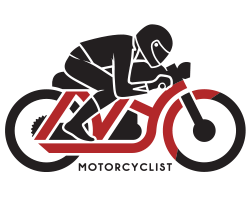

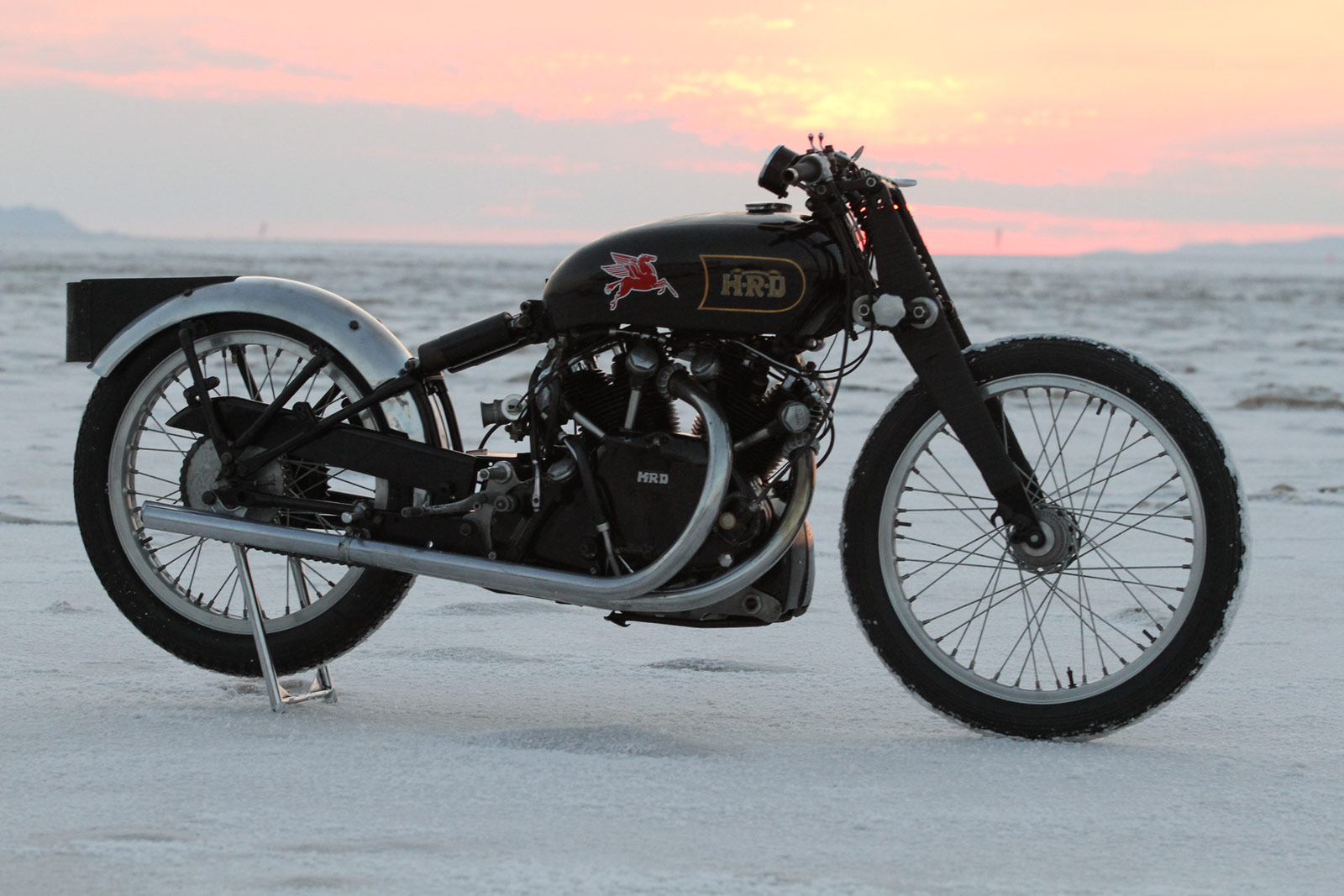
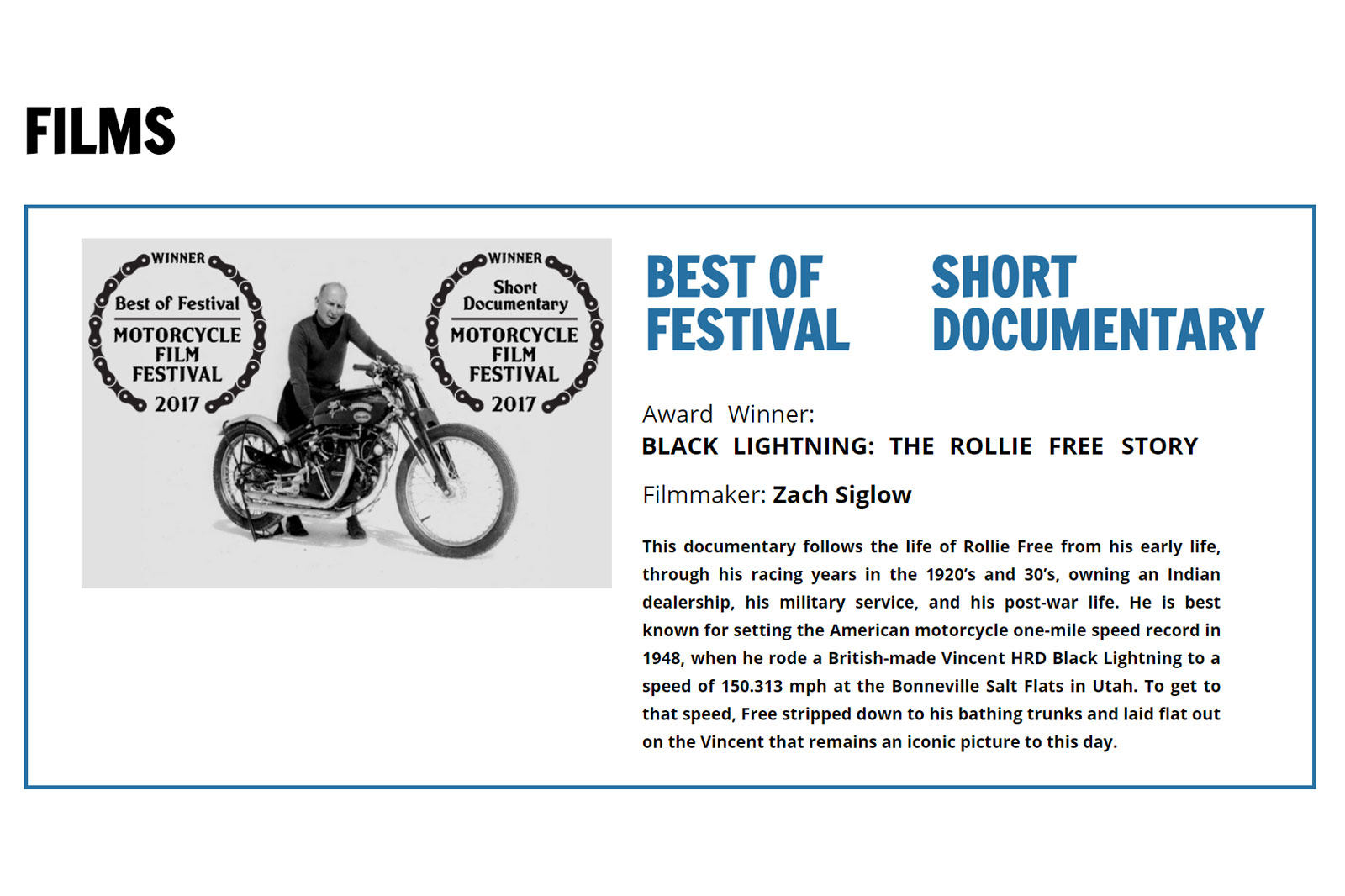
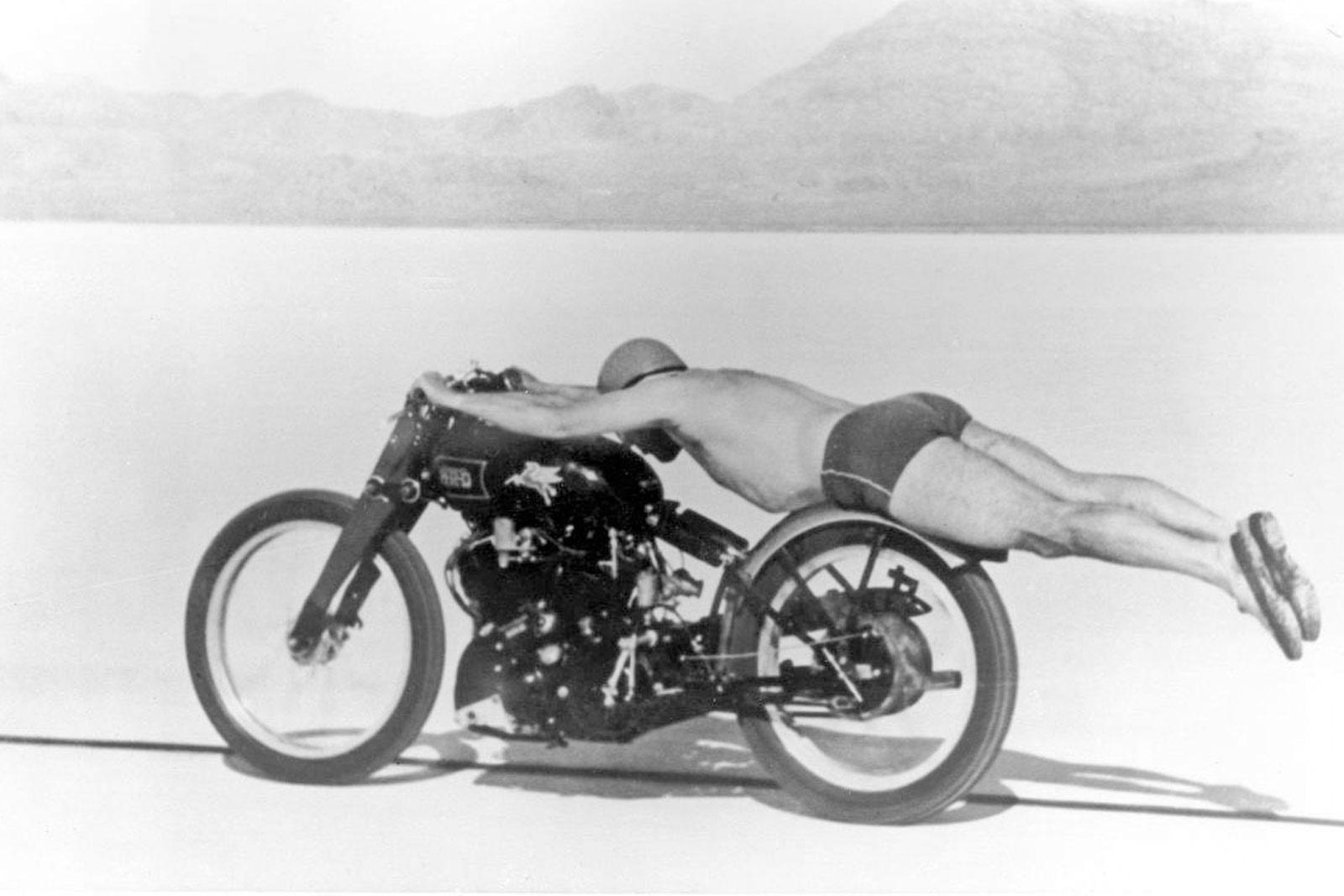
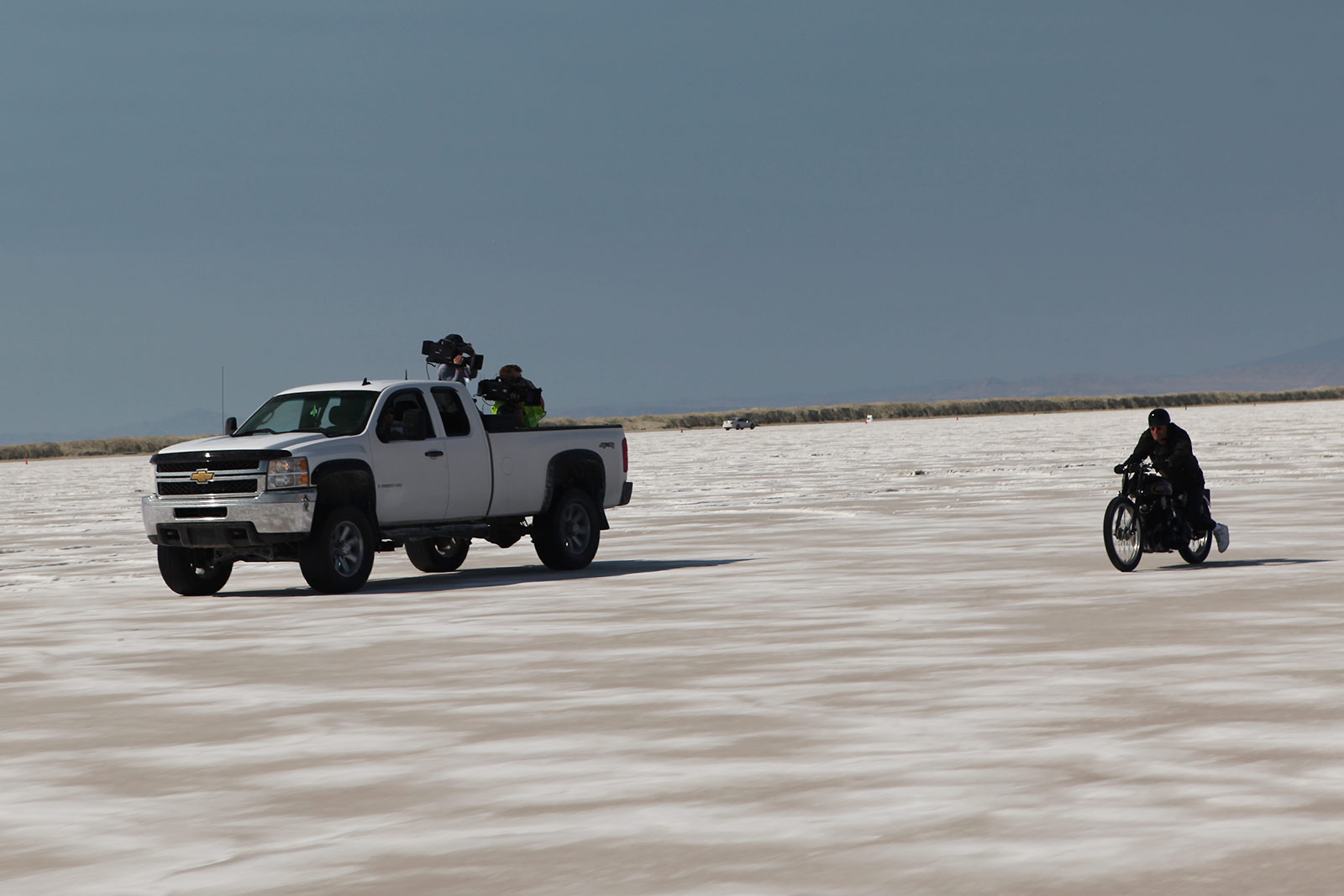
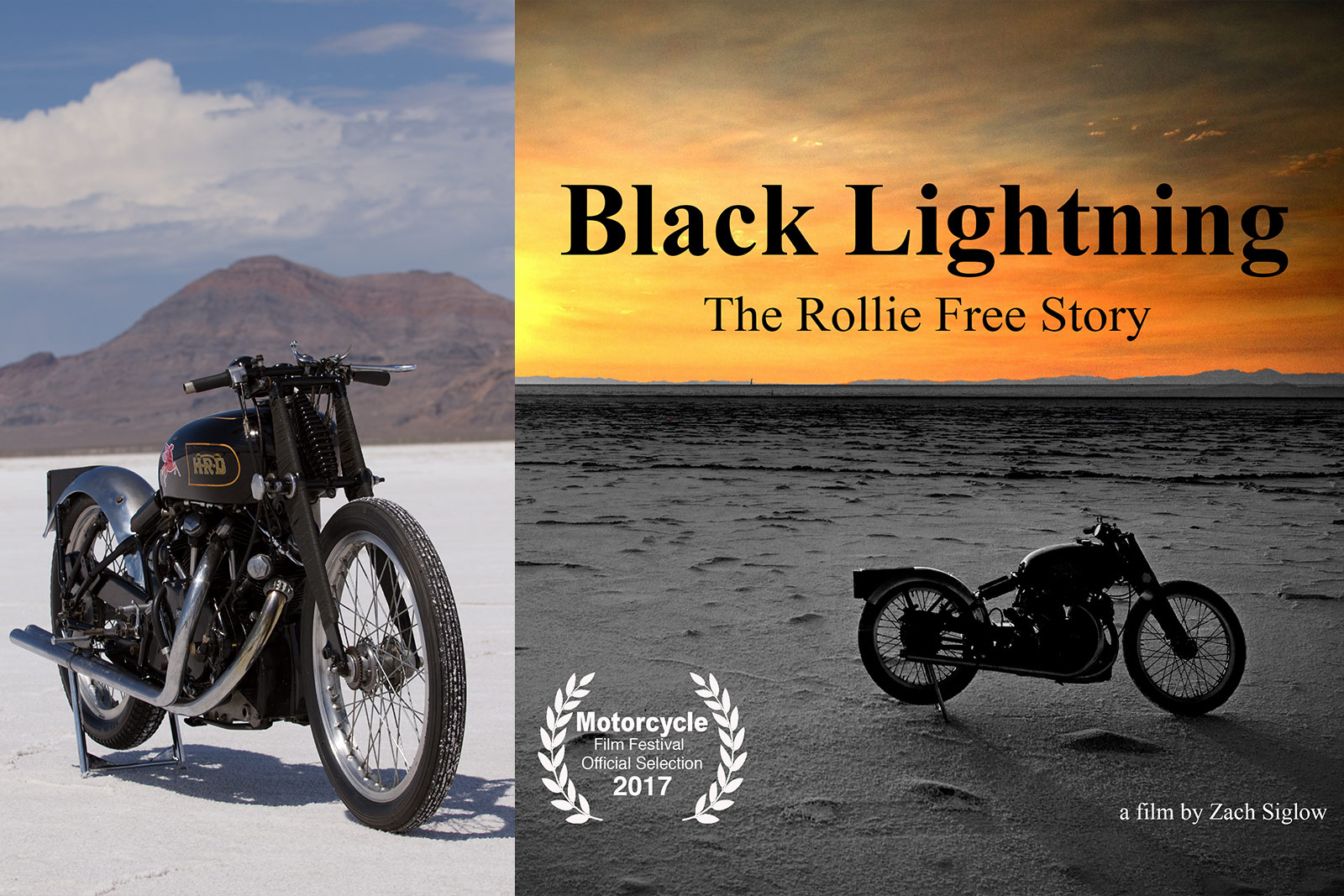
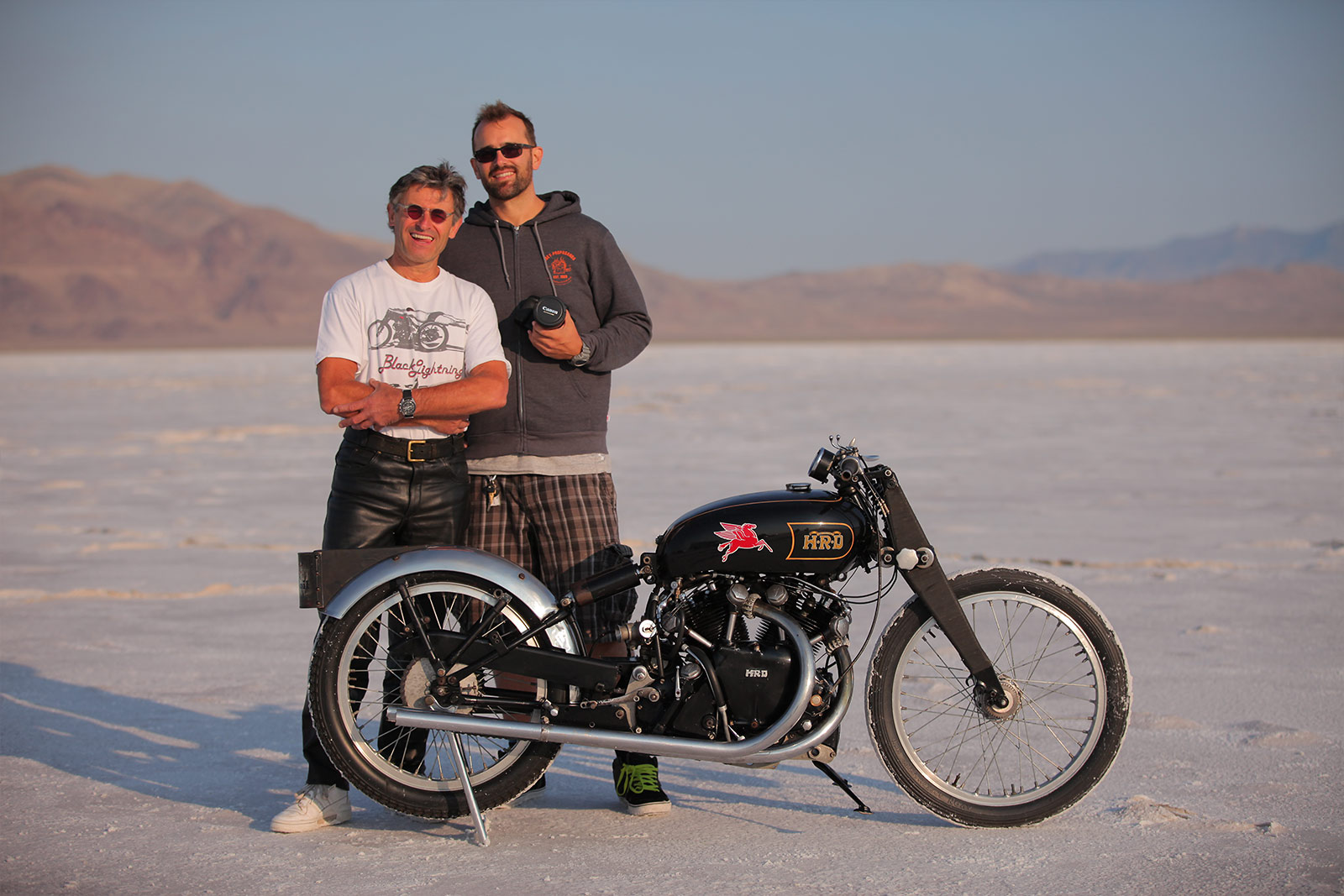
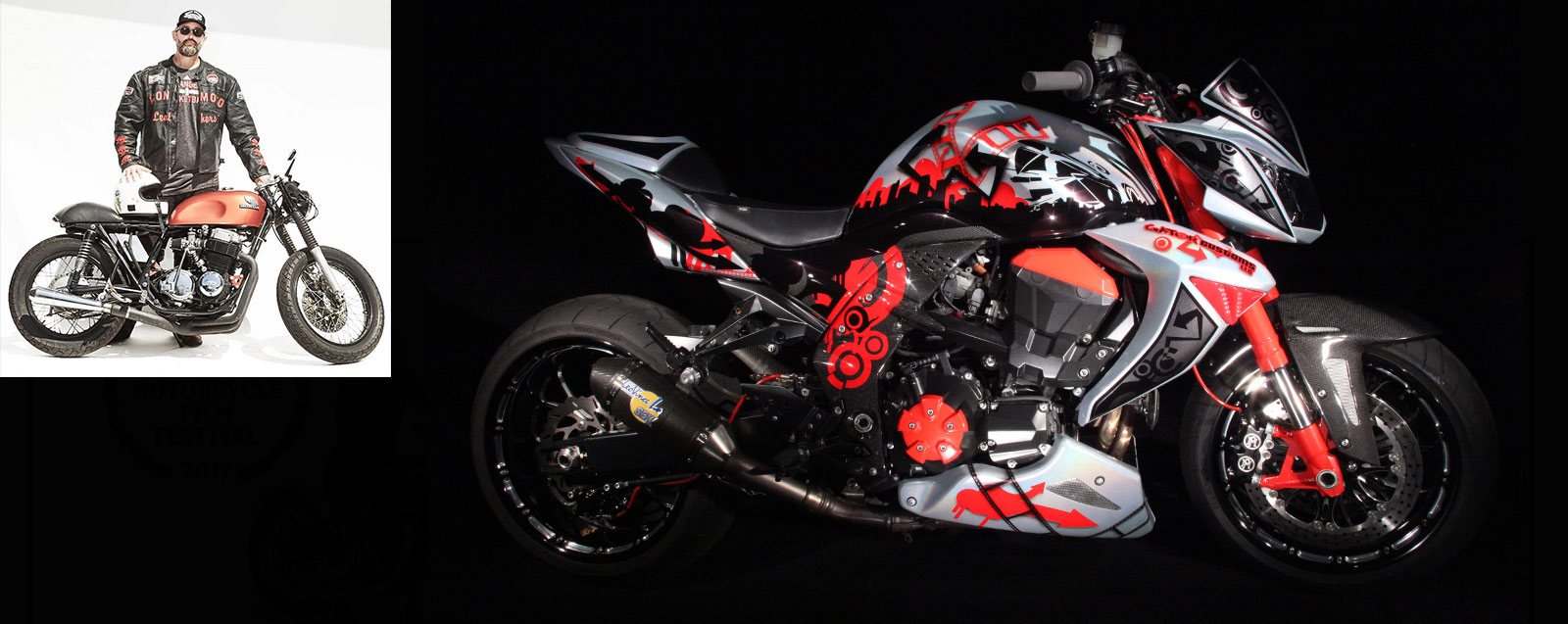
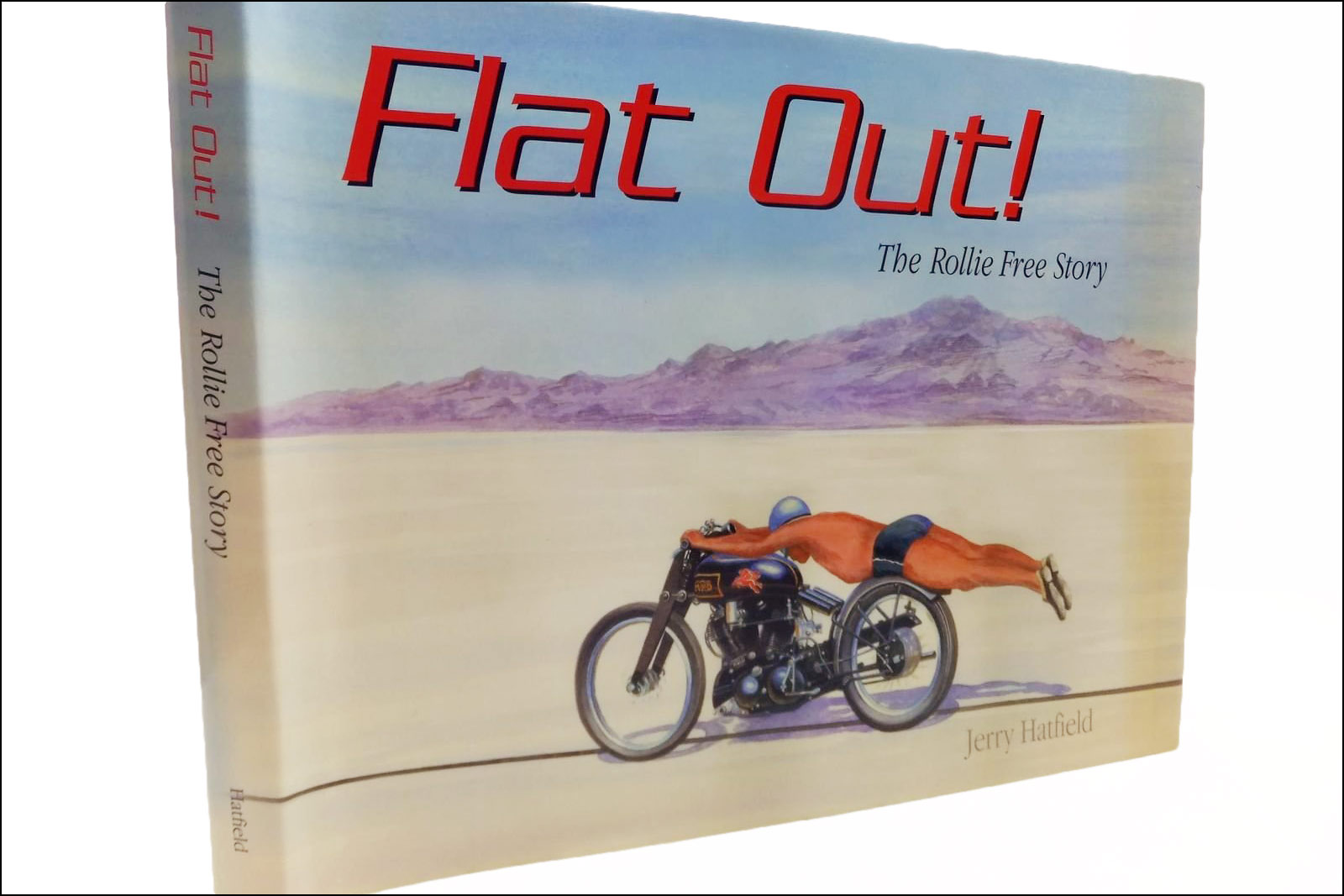


We are so proud of Zach, not only for this documentary but for his many other outstanding accomplishments, especially his latest: his and Krista's three-month-old son, Baxter.
Hey Zach, best of luck to you and can’t wait to see your work. Should you ever need a ‘Rollie Free’ double stand in I’m your man! Hey I’ve even got the period swim pants and correct haircut too.
Great interview insights. I can’t wait to see the film! Congrats on your accomplishment!
Great interview. Fantastic work. Looking forward to the film.
Hatfield is god!